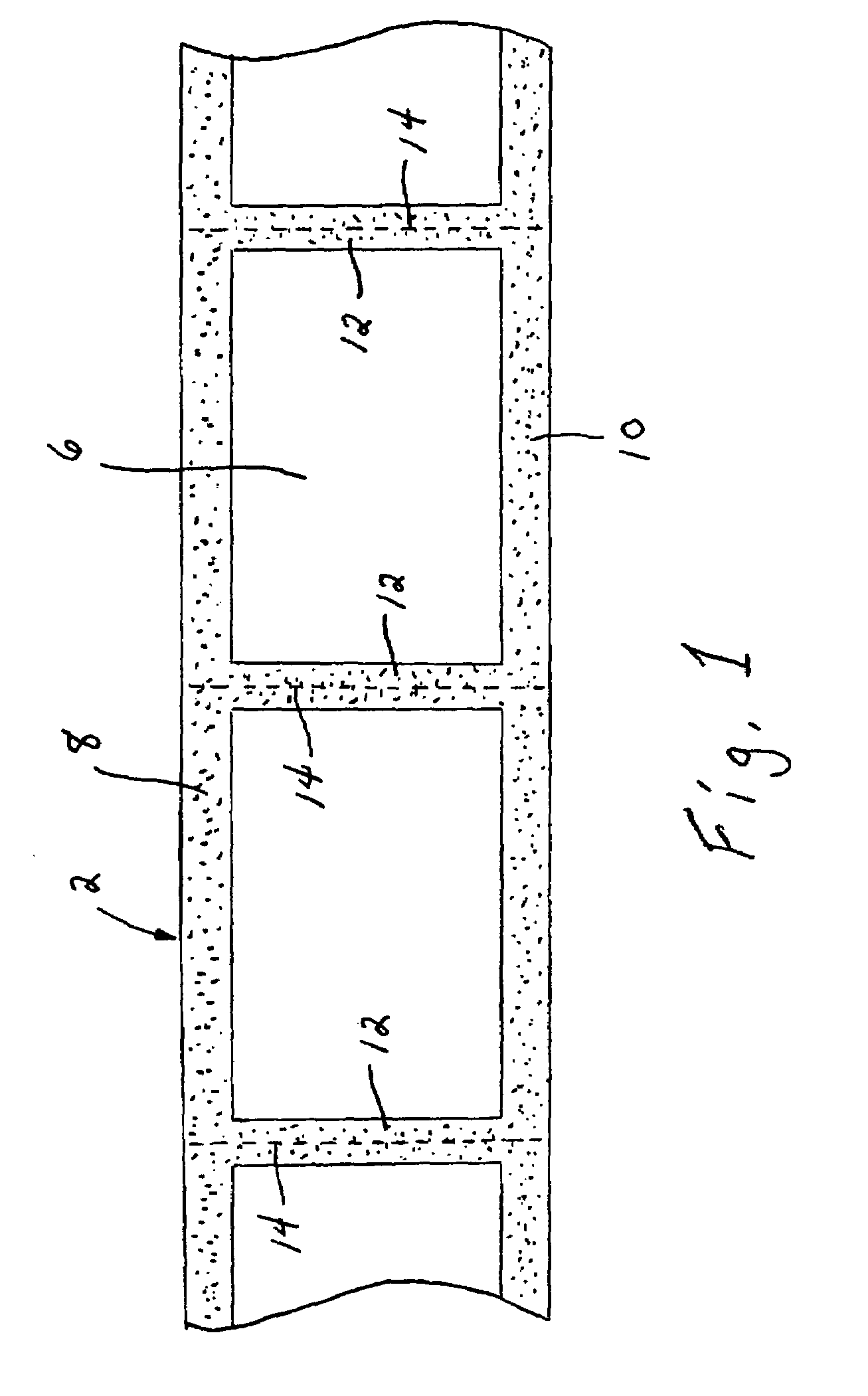Cohesive coating for snack food packaging
a packaging system and cohesion technology, applied in the direction of film/foil adhesives, packaging, synthetic resin layered products, etc., can solve the problems of undesirable rendering, failure of seals which are unacceptable to manufacturers and consumers, etc., to achieve satisfactory adhesion, enhance cohesion, and improve adhesion.
- Summary
- Abstract
- Description
- Claims
- Application Information
AI Technical Summary
Benefits of technology
Problems solved by technology
Method used
Image
Examples
example 1
[0048]Most preferred formula using non-self-crosslinking acrylics vs. standard cohesive formulations using self-crosslinking acrylics on polypropylene film. Results are an average of three data points.
[0049]
Cohesive Samples onMinimumOPP filmBond StrengthMode of FailureC2881 (most preferred449 gadhesive failure / non-formula) (69% NRL / resealable31% Non-self-crosslinking acrylic)C1099B (Standard w / self324 gcohesive failure / resealablecrosslinker)C1380-01 (Standard w / self314 gcohesive failure / resealablecrosslinker)
example 2
[0050]Preferred formula range using non self-crosslinking acrylics vs. standard cohesive formulation using a self-crosslinking acrylic on primed polyester film. Results are an average of three data points.
[0051]
Cohesive SamplesMinimumon primed PET filmBond StrengthMode of FailureC1772 (preferred686 gadhesive failure / non-range 75% NRL / 25% Nonresealableself-crosslinkingacrylic)C2942 (preferred915 gadhesive failure / non-range 80% NRL / 20%resealableNon self-crosslinkingacrylicC1380-01 (Standard180 gcohesive failure / resealablew / self crosslinker)
example 3
[0052]Preferred formula range using non self-crosslinking acrylics vs. standard cohesive formulation using a self-crosslinking acrylic on polyester film. Results are an average of three data points.
[0053]
Cohesive SamplesMinimumon primed PET filmBond StrengthMode of FailureC1704 (preferred547 gadhesive failure / non-range 65% NRL / 35%resealableNon self-crosslinkingacrylicC1380-01 (Standard455 gcohesive failure / resealablew / self crosslinker)
PUM
| Property | Measurement | Unit |
|---|---|---|
| temperature | aaaaa | aaaaa |
| temperatures | aaaaa | aaaaa |
| critical temperature | aaaaa | aaaaa |
Abstract
Description
Claims
Application Information
 Login to View More
Login to View More - R&D
- Intellectual Property
- Life Sciences
- Materials
- Tech Scout
- Unparalleled Data Quality
- Higher Quality Content
- 60% Fewer Hallucinations
Browse by: Latest US Patents, China's latest patents, Technical Efficacy Thesaurus, Application Domain, Technology Topic, Popular Technical Reports.
© 2025 PatSnap. All rights reserved.Legal|Privacy policy|Modern Slavery Act Transparency Statement|Sitemap|About US| Contact US: help@patsnap.com


